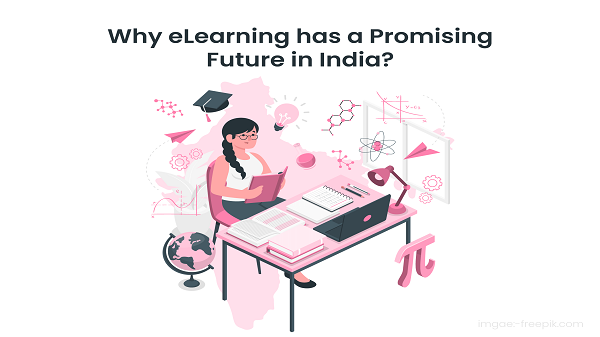Future of E-Learning in India
The past year has taught us several things. One of them being the fact that a major and the most evident characteristic of us, the whole of humanity, is that we are adaptive and progressive. This is true in the case of the education sector as well. Students from nursery to postgraduate are witnesses to some of the revolutionary developments in E-learning.
However, the concept of learning through virtual means is not a recent one. In 2014, the Government of India looked to develop certain educational resources with the introduction of R&D projects and policies. This was under the jurisdiction of the Department of Electronics and Information technology (DeitY).
The Scope of E-Learning Software Development in India
Since the creation of DeitY, the use of online platforms to provide education has only seen a steady increase. To put this into perspective, consider the statistics of internet connections present in India back in 2014 when DeitY was first formed.
A formidable number of 250 million users had access to an internet connection. In seven years, that number has become 624 million users.
This increase in the number of users reflects that e-Learning has one of the biggest customer bases compared to other industries.
Another factor that one should consider is the number of functioning institutions in India at the moment. India is home to millions of schools and over a thousand universities. These institutions educate a significant portion of the current population. Although this was possible in a classroom setting, sitting in front of a blackboard, it is not so anymore.
These schools have turned to virtual mediums that integrate various teaching aids to put across points better and overcome the challenges of learning online.
Aspects of e-learning
A single online platform will cater to the individual needs of the child despite it being the same platform for everyone. This ability to adapt to the needs of the child is due to the following aspects:
● Real-Time Instructions:
E-Learning app development makes it possible to conduct live classes. Therefore, institutions can continue to follow the traditional schedule of classes even on a virtual medium. This aspect is that instructors can now conduct classes from remote areas as well, provided the internet connection is good enough.
● Video Content:
The demonstration of a concept is no longer restricted to diagrams and content written on a board. Rather, students are capable of grasping concepts that contain complex ideas or require extensive imagination.
● Interaction through Conferencing:
It is proven that students learn best when there is an element of collaboration taking place with their peers. Although students are unable to meet their peers face to face, they are still able to interact with their peers with the use of conferencing resources made available by eLearning app development.
● Conducting Tests:
E-Learning platforms make this possible as online tests are now the only measurement standard in some institutions.
● Unlimited Resources:
One is capable of finding information regarding anything from humanities to advanced physics. Thus, the students have a range of educational content available at their disposition.
● Self-instruction:
The prevalence of eLearning software development also encourages students to learn in their own time. This is especially helpful to individuals that are working and looking to study as well. The ability to set their deadlines and goals while learning contributes to this.
The Advantages of VSAT
Very Small Aperture Terminals (VSAT) involves three components. These components work in conjunction to provide internet connection in remote areas. The central hub, satellite, and the smaller nodes make up a typical VSAT setup. In addition to providing internet, it also provides:
- Mobile Access: Individuals owning a simple mobile device are also capable of connecting to the internet. The presence of the satellite makes this possible.
- Reliability: This form of internet connection is also popular with ATMs and POS applications since it does not falter very often.
- Cost Effectiveness: The minimal price of setting up a VSAT connection makes it affordable to the average consumer as well. For a long time, Cable TV was a possible commodity because it used satellites to propagate signals.
Golden Business Opportunities
One cannot overlook the potential for the growth of the e-Learning industry. India possesses a large geographic area that houses over a billion people and counting. India has also faced difficulty with educating this entire population, given the lack of connectivity.
However, the Digital India Drive has changed all this, making it possible for even the country's remotest regions to receive a viable internet connection. This means that eLearning platforms are now capable of tapping into a new customer base.
Conclusion
As per the global forecasts, the eLearning industry is said to possess an annual growth rate of 21% globally. This percentage reflects just how rapidly the advancements are taking place. In fact, with the ever-increasing capabilities of eLearning software development, education will never be the same.



